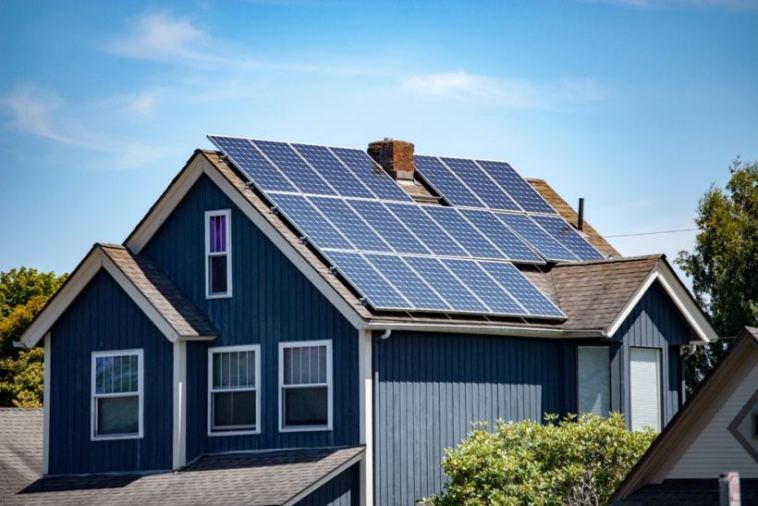- Like
- SHARE
- Digg
- Del
- Tumblr
- VKontakte
- Flattr
- Buffer
- Love This
- Save
- Odnoklassniki
- Meneame
- Blogger
- Amazon
- Yahoo Mail
- Gmail
- AOL
- Newsvine
- HackerNews
- Evernote
- MySpace
- Mail.ru
- Viadeo
- Line
- Comments
- Yummly
- SMS
- Viber
- Telegram
- JOIN
- Skype
- Facebook Messenger
- Kakao
- LiveJournal
- Yammer
- Edgar
- Fintel
- Mix
- Instapaper
- Copy Link
Introduction
Did you know that more than 2 million households in the United States of America have a solar panel installation in their homes? Solar panel technology has been around for decades, but it is truly starting to change the way that humans harness and use energy in their daily lives. Solar panel science allows people to collect energy from the sun and use it to power their homes.
There are many types of solar panels out there as solar panel technology continues to improve, and those that move forward with installing solar panels are seeing the big-time benefits that come with the investment. The good news is that you’re in the right place to learn more about how do solar panels work and the benefits of adding them to your home.
Keep reading this article to learn more about solar panel science today!
1. Solar Panel Technology Helps the Environment
Most homes that are connected to the power grid get their power from powerplants that use fossil fuels or water to produce electricity. These two power sources use valuable natural resources and harm the ecosystem around them. Installing solar panels is a great way to help nature heal because it reduces your dependence on the energy companies to keep your home running.
Fossil fuels are bad because they put harmful chemicals into the air when they get burnt. Hydroelectric power plants and nuclear power plants require water from local rivers and the creation of dams.
You can help to cut down on the water usage and fossil fuel reliance that society faces. It is one of the many benefits of getting a solar panel installation at your house. You can see more common questions related to getting solar and helping the environment.
2. Saves Money
Energy bills aren’t cheap, especially if you have a growing family with young kids. You need electricity to keep the lights on and your household appliances running. Electricity is also vital for producing heat during the winter and keeping inside temps cool during summer.
There is a bit of an upfront investment that comes with getting solar panel technology for your home, but it will pay for itself in the long run. There are many government incentives that will allow you to get a tax credit on your solar energy system. You’ll also save a ton of money that you won’t have to pay to the energy company each month.
3. Reliable Energy
Fossil fuels are a finite resource, and odds are that they’ll run out sometime in the next few hundred years. Meanwhile, you can always count on the sun to produce plenty of energy for your solar panels to collect and harvest. If the power grid ever goes out, you’ll be good to go since your solar panels will give you the power that you need all through the year.
4. Low Maintenance
One thing that is quite underrated when it comes to solar panel technology is how low maintenance it is. Solar panels are much more robust than they get credit for, which means you don’t need to do much to keep them in great condition. You shouldn’t need to get maintenance on your solar panels for years after they’ve been installed at your home.
You can also rely on your solar panels to continue collecting energy from the sun for decades to come. Get on your roof and remove dust periodically, but that is the most maintenance that your solar panel installation needs.
5. Tax Incentives
The government wants you to invest in solar panel science since it is good for the environment. A big initiative of the government is to offer tax incentives to those that choose to get solar panels installed. The total cost of getting solar panels installed looks daunting, but the government incentives will remove a massive chunk of the cost for you.
Some incentives are available from the federal government while others come from state and local government initiatives. Do your research before you start installing solar panels.
6. Increases Home Value
Many prospective homeowners want to get homes that are sustainable and green. Adding solar panels to your home and harnessing solar panel technology is a great way to boost the curb appeal and overall value of your home. Finding a house that already has solar installed and hooked up saves the potential homeowner a ton of money and stress.
If you think you’ll sell your home at some point in the next ten years then you’ll recoup some major value on the market.
7. Easy Installation
There are plenty of great solar installation companies across the country that are great to work with when you decide that you want solar panel technology at your home. It only takes a matter of days to get your solar energy system hooked up and running. You’ll need to decide if you want solar panels on your roof or if you’d prefer them elsewhere on your property.
8. Earn Money
One of the first things that you need to do when you start looking into solar panel installation for your home is how much electricity your home uses on a monthly basis. If you get enough solar panels at your home you can produce a surplus of energy. The electric company in your area is happy to purchase your extra electricity in the form of an energy credit.
If you continue to generate more power than your household uses then you’ll set yourself up to make a small amount of passive income each month from the electric company. It is one of the many great benefits of solar panel technology.
Invest in Solar Panel Technology for Your Home
Choosing to make the most of solar panel technology is a wise move, as solar panel science is the way of the future. The benefits of installing solar panels extend from making a passive income all the way to eliminating your dependence on the energy company. Best of all, you help out Mother Nature and eliminate the use of fossil fuels.
For more informative and exciting articles like this one, make sure you check out our technology blog.


